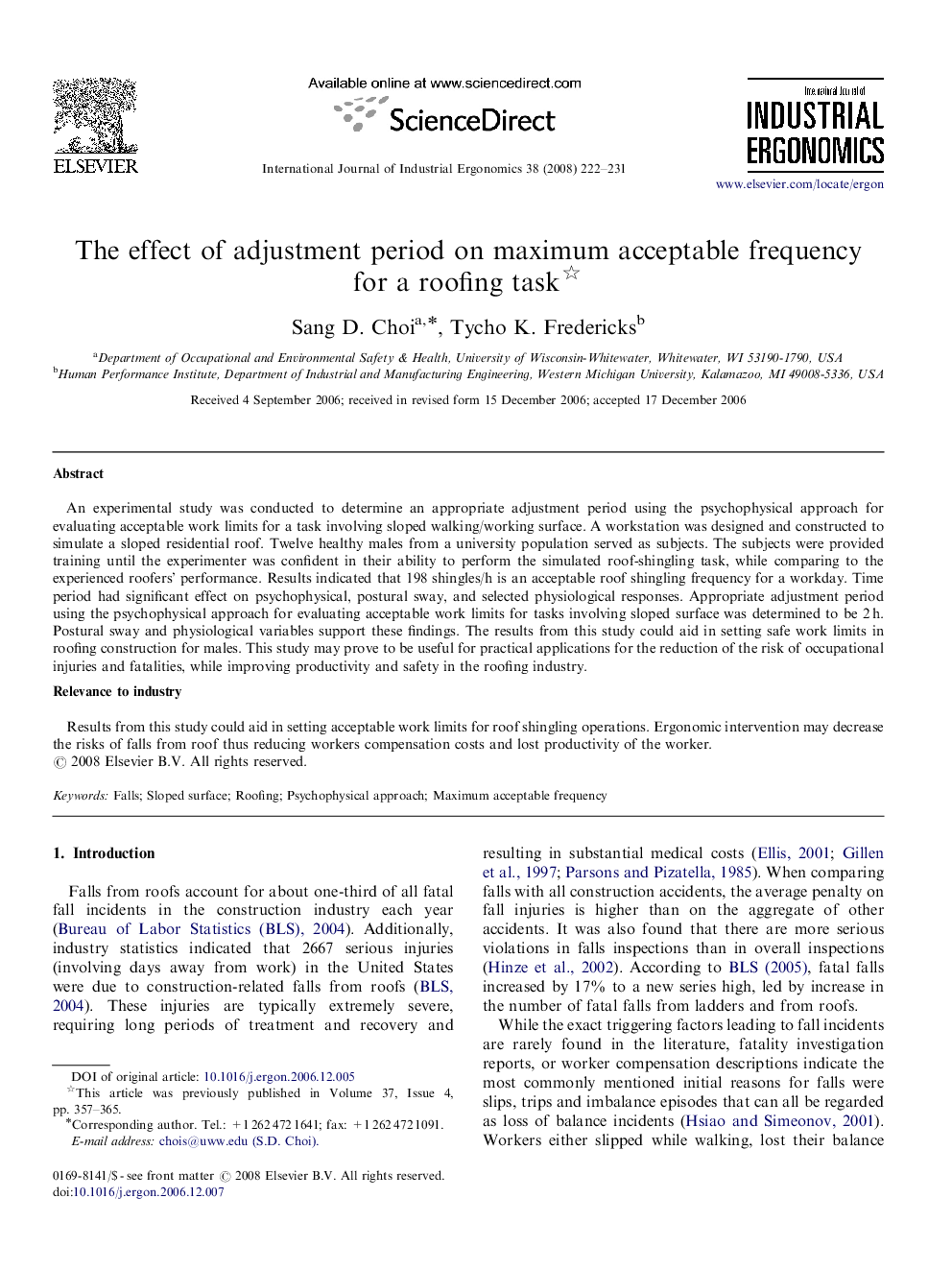| Article ID | Journal | Published Year | Pages | File Type |
|---|---|---|---|---|
| 1096857 | International Journal of Industrial Ergonomics | 2008 | 10 Pages |
An experimental study was conducted to determine an appropriate adjustment period using the psychophysical approach for evaluating acceptable work limits for a task involving sloped walking/working surface. A workstation was designed and constructed to simulate a sloped residential roof. Twelve healthy males from a university population served as subjects. The subjects were provided training until the experimenter was confident in their ability to perform the simulated roof-shingling task, while comparing to the experienced roofers’ performance. Results indicated that 198 shingles/h is an acceptable roof shingling frequency for a workday. Time period had significant effect on psychophysical, postural sway, and selected physiological responses. Appropriate adjustment period using the psychophysical approach for evaluating acceptable work limits for tasks involving sloped surface was determined to be 2 h. Postural sway and physiological variables support these findings. The results from this study could aid in setting safe work limits in roofing construction for males. This study may prove to be useful for practical applications for the reduction of the risk of occupational injuries and fatalities, while improving productivity and safety in the roofing industry.Relevance to industryResults from this study could aid in setting acceptable work limits for roof shingling operations. Ergonomic intervention may decrease the risks of falls from roof thus reducing workers compensation costs and lost productivity of the worker.
